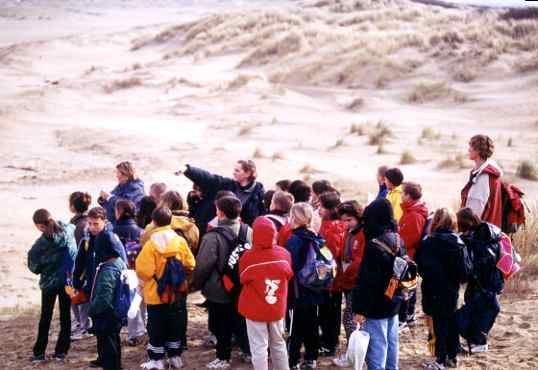|
|
| Murielle | ||
|
|
Murielle, who is in charge of science and education with the C.M.N.F., introduces us to the area and explains the rules to be followed. Equiped with our binoculars, note pads, pencils, Wellingtons.... we walk across the dunes to the beach. Jacky sets up his telescope and it is marvellous ! Through the telescope we can see three seals. Julie runs to me, grabs my arm and says emotionally : « I've seen a real seal, you know ! ». Truly an unforgetable and emotional moment. Seeing seals on the television or in books is one thing, but in real life it's absoluty fantastic ! Especially just a few kilometres from school. Each child waits patiently for his turn whilst Murielle explains how to recognise a harbour seal.
|
|
![]()
| The Harbour Seal (or Common Seal) | ||
|
The Harbour Seal is grey with spots and his snout is the same as that of a dog contrary to the long snout of the Grey Seal. Murielle helps us
understand why the seal is threatened by pollution, tourism, boats... and
therefore protected. Then she shows us the reason for preserving the Harbour
Seal. The disappearance of this super preditor could set off an
environmental imbalanbce. Murielle explains her work at the C.M.N.F. with
Jacky and the methods of following the Harbour Seal population along our
coast.
|
 The Harbour Seal (also Common Seal) |
|
|
|
||
| Seals under threat | ||
|
The threats posed to the seals weaken the population. The most obvious causes are due to boat noise, pollution (plastic, chemicals, oil...), infections, severe injuries caused by the blades from outboard motors. The children have also discovered pollution of the food chain : vegetable plankton eaten by animal plankton, eaten by shrimps which are in turn eaten by fish and then eaten by the seal. This pollution indirectly destroys the seal, weakening it immune system, allowing the contraction of the morbilivirus (commonly known as distemper)
Marie-Christine |
|
![]()
 Page
2
Page
2
